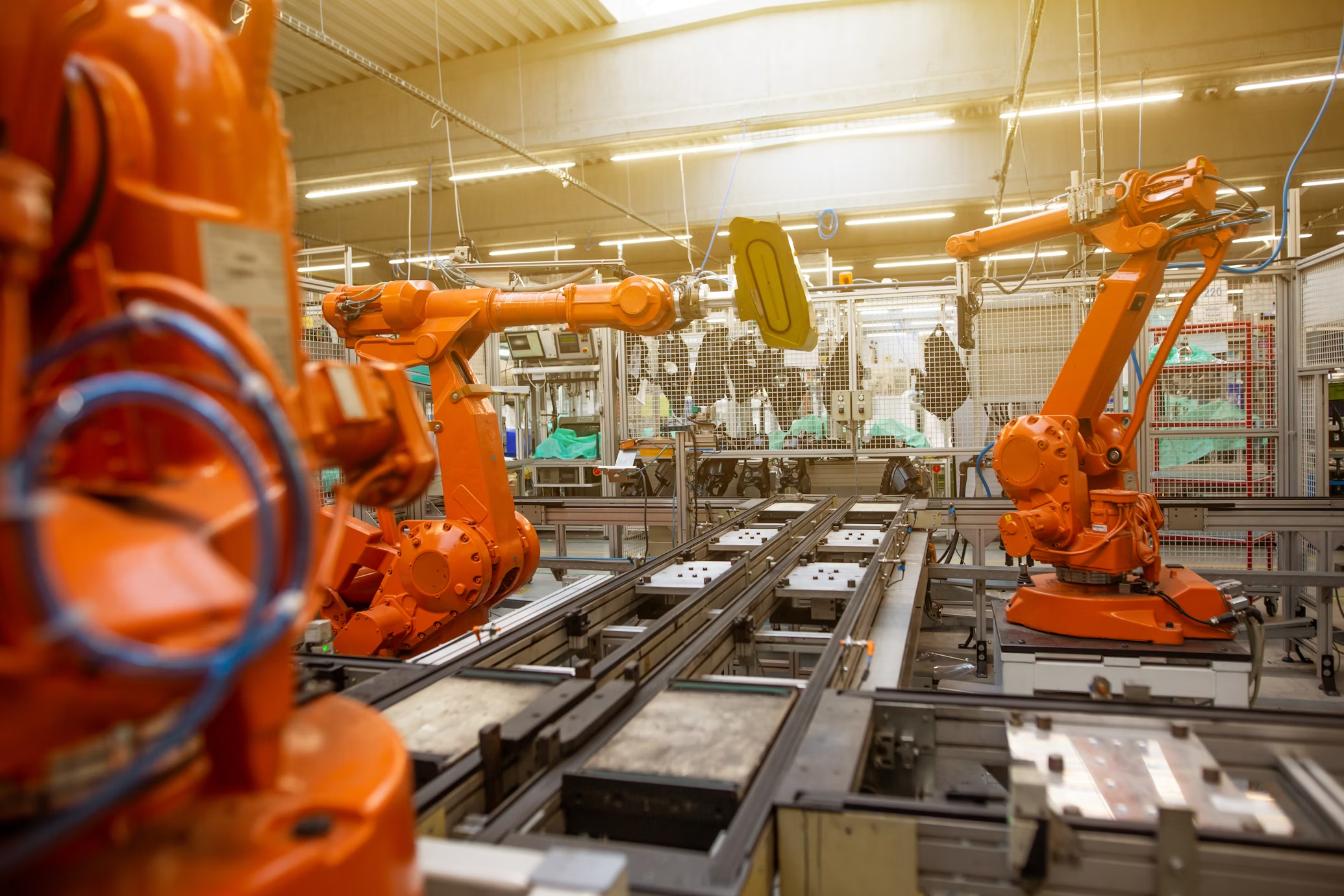
The manufacturing industry is undergoing a profound transformation thanks to the integration of Artificial Intelligence (AI) and robotics. These technologies reshape production processes, improve efficiency, reduce costs, and enable more personalized products. This article explores how AI and robotics revolutionize manufacturing and increase production efficiency.
The Rise of AI and Robotics in Manufacturing
AI and robotics have made significant inroads in manufacturing, streamlining operations and enhancing capabilities. Incorporating these technologies into production lines allows manufacturers to automate tasks that were once manual, reducing the risk of human error and ensuring precision in every operation. Robotics, often powered by AI, enables machinery to perform complex, repetitive tasks more consistently and quickly.
AI is pivotal in optimizing production schedules, predicting maintenance needs, and improving product quality. With AI systems, manufacturers can analyze vast amounts of data to uncover insights that would be difficult for human workers to detect. Using machine learning algorithms, AI systems continuously improve efficiency, becoming more intelligent.
Boosting Production Efficiency Through Automation
One of the most significant advantages of AI and robotics is the automation of production processes. Automation leads to faster production cycles, as machines can work around the clock without breaks or rest. For instance, robotic arms and automated guided vehicles (AGVs) can handle material movement, assembly, and packaging at speeds far beyond human capability.
Reducing manual labor results in lower operational costs. Manufacturers can allocate their workforce to more strategic, creative, and decision-making roles by minimizing the reliance on human workers for routine and physically demanding tasks. This shift not only increases efficiency but also helps improve employee satisfaction, as workers are no longer burdened with monotonous or hazardous tasks.
Moreover, robots and AI-driven systems can operate in environments that are unsafe or unsuitable for humans. In hazardous industries such as chemicals, pharmaceuticals, or heavy machinery, robots can safely perform operations that would be risky for human operators, thereby reducing workplace accidents and enhancing safety.
Real-Time Data and Predictive Analytics
AI-powered analytics in manufacturing allow businesses to make more informed decisions by offering real-time insights into production processes. Sensors embedded in machinery and robots gather data on equipment performance, environmental conditions, and production output. AI algorithms process this data and provide actionable insights, allowing managers to make informed decisions regarding production optimization.
Predictive analytics, a key feature of AI, can forecast when a machine will likely fail or require maintenance, allowing for preventative maintenance before a breakdown occurs. This reduces downtime and minimizes costly repair work. Predictive maintenance extends machines’ life, ensuring production lines’ smooth running without unexpected disruptions.
Furthermore, AI systems can help manufacturers improve production quality by detecting product defects early in the production cycle. Using computer vision and machine learning models, AI can identify even the most minor imperfections in manufacturing, ensuring that only products that meet stringent quality standards make it to the market.
Customization and Flexibility in Production
AI and robotics also enable greater flexibility and customization in production. With the increasing demand for personalized products, manufacturers increasingly use AI to create tailored solutions that meet individual customer needs. Robots can adjust production processes quickly to accommodate changes in product specifications, reducing the time required to shift from one product type to another.
For example, in the automotive industry, AI and robots customize vehicles according to specific customer preferences, such as color, design, and features. This level of flexibility allows manufacturers to cater to a broader range of consumer preferences without sacrificing production efficiency.
Overcoming Challenges and Ensuring a Smooth Integration
While the benefits of AI and robotics in manufacturing are clear, integrating these technologies into existing production lines can be challenging. One of the primary concerns is the high upfront cost of implementing AI-driven systems and robotics. However, the long-term savings from improved efficiency, reduced labor costs, and fewer errors make this initial investment worthwhile.
Manufacturers must also train their workforce to work alongside these technologies. As automation takes over routine tasks, employees must acquire new skills to manage, maintain, and improve AI and robotic systems. This requires focusing on reskilling and upskilling the workforce to ensure a smooth transition into a more technologically advanced manufacturing environment.
Moreover, companies must address concerns related to data security. As manufacturing processes become increasingly connected, ensuring the safety of sensitive data becomes critical. Manufacturers must invest in robust cybersecurity measures to prevent data breaches and protect intellectual property.
Future Trends in AI and Robotics for Manufacturing
The future of AI and robotics in manufacturing is promising, with continuous technological advancements. AI algorithms will enable even greater automation and efficiency as they become more sophisticated. The next generation of AI systems will likely incorporate advanced capabilities such as autonomous decision-making, where robots can make real-time production decisions without human intervention.
Additionally, the number of collaborative robots, or cobots, is expected to increase. Cobots work alongside human workers, performing tasks that complement human abilities. Combining human intelligence and robotic precision enhances productivity and fosters safer work environments.
Another key trend is integrating AI and robotics with the Internet of Things (IoT). IoT-enabled devices can communicate with AI systems, providing real-time data and feedback on production conditions. This connectivity will enable more streamlined production processes and greater control over manufacturing environments.
AI and robotics are revolutionizing the manufacturing industry by driving efficiency, reducing costs, and enabling more flexible and personalized production. As these technologies evolve, their role in reshaping manufacturing will grow stronger. Companies that embrace AI and robotics today will be well-positioned to capitalize on the many benefits these innovations offer, ultimately staying competitive in an increasingly digital and automated world.